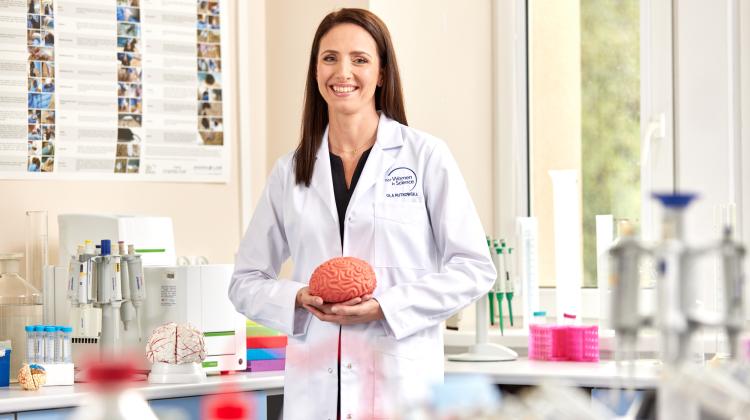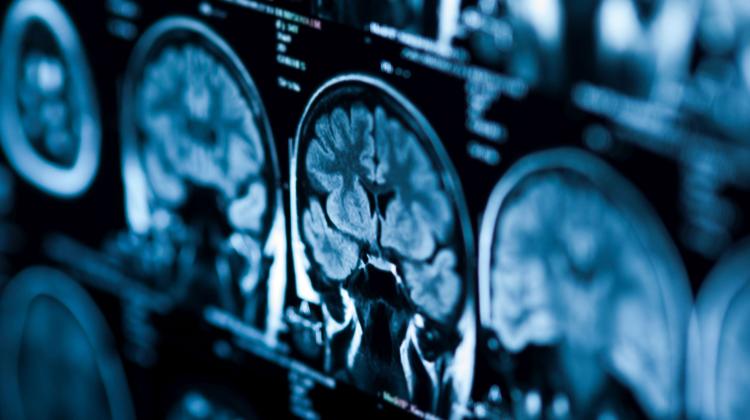Scientists ‘pharmacologically rejuvenate’ the brains of old mice
 Adobe Stock
Adobe Stock
Polish researchers have described a method for rejuvenating the brain of old mice. They showed that if the breakdown of glycogen in the brain is sufficiently slowed down, old mice are ready to absorb new information, and the connections in their brain look like those of juvenile mice.
The team led by Professor Dariusz Rakus from the University of Wrocław decided to check whether brain ageing can be stopped, and maybe even reversed. The researchers have confirmed that this can be done by slowing down the breakdown of glycogen in the brain (the enzyme inhibitor was delivered to mice by abdominal injections). The research was published in the journal Aging Cell.
GLYCOGEN AND THE BRAIN
Glycogen is a polysaccharide (it consists of thousands of glucose residues), in which the energy from the sugar we consume is packed. Glycogen is stored in the liver and muscles. It turns out, however, that it is also very important in the brain and in the formation of memory traces.
Astrocytes are cells that occupy the space between neurons. Humans have about as many brain cells as there are neurons. Some time ago, in a series of various studies, it was discovered that lactate (associated with muscle sores) from broken down glycogen formed in astrocytes. Later research showed that this lactate was essential in the formation of memory traces. Astrocytes secrete lactate, but only when the animal is learning - thanks to this, the neural pathway next to these astrocytes is stimulated. Lactate therefore causes the formation of memory traces by strengthening nearby synaptic connections.
In order to check the function of this lactate in the brain, in foreign studies researchers administered a glycogen breakdown inhibitor a substance that slows down the breakdown of glycogen, and thus blocks the formation of lactate in the brain - to chickens through the skull -. It turned out that the chickens had poorer memory and learning results (they couldn't remember which colour of the balls they were fed had a terrible, bitter taste).
Poles investigated similar processes, but it turned out that another team published first. Scientists from Wrocław and Warsaw decided to conduct research in a different area and check what the inhibition of lactate production would cause in the brain of old individuals. There were hypotheses that a different mechanism would work in the mature brain.
The result was very interesting indeed. Old, two-year-old mice (the life of mice is so short that this would translate into 70-80 years of human age) after two weeks of glycogen breakdown blockers administration performed better in behavioural tests: they were ready to take on challenges, explore new objects in their environment and explore a new space more than the well-known one. Curiosity and readiness to accept new information is usually weak in older mice.
SYNAPSES AFTER LIFTING
The Polish team also studied changes in the brain structure of these old mice. After two weeks of the experiment, the synapses in the mouse brains changed shape. They became like in young mice - they were ready to accept new information.
Another conclusion from this experiment was that when lactate is deficient, the hippocampal proteome - a set of proteins produced in a brain structure crucial for memory formation - becomes similar to the proteome of young mice. So the brain starts working according to a different pattern.
The same compound - lactate - has therefore different functions in the brain at different stages of life: when young, it is necessary to remember new information and learn, but once the brain is formed thanks to it, it blocks its further plasticity.
When asked if the mouse's brain might have lost some of its memories during this 'rejuvenation treatment', Professor Dariusz Rakus tells the Science in Poland website: 'In order for the brain to be ready to accept new information, some of the weakest memory traces might have been erased.’
The scientist compares this process to what happens in to children between two-to-three-years-old when the 'great erasure' occurs in the brain. Although the so-called childhood amnesia occurs at this age - children lose a lot of memories (this is why people do remember almost nothing from the first 2-3 years of their lives), the strongest memory traces are not lost. The researcher supposes that a similar thing could have happened in the experiment with aged mice.
LIFE WITHOUT GLYCOGEN
The researcher points out that glycogen breakdown inhibitors administered to animals in the experiment blocked the breakdown of this polysaccharide not only in the brain, but also throughout the body. And the rapid breakdown of glycogen in the muscles is, after all, essential during intense physical exercise.
'We have not noticed a negative impact of this on the physical fitness of the mice. But they may indeed not be able to break records in mouse sports competitions,’ the researcher says. Such mice will probably also tolerate periods of prolonged fasting less, because the breakdown of glycogen in the liver is a source of glucose for the body in case of food shortage. But the mice in the lab were not starving.
The research was carried out at the University of Wrocław in cooperation with the Nencki Institute of Experimental Biology in Warsaw, Max-Planck Institute of Biochemistry in Martinsried, the Wrocław University of Science and Technology, the Wrocław University of Environmental and Life Sciences, the Wrocław Medical University and the Hirszfeld Institute of Immunology and Experimental Therapy PAS in Wrocław, and financed by the Polished National Science Centre.
PAP - Science in Poland, Ludwika Tomala
lt/ bar/ kap/
tr. RL
Przed dodaniem komentarza prosimy o zapoznanie z Regulaminem forum serwisu Nauka w Polsce.



















